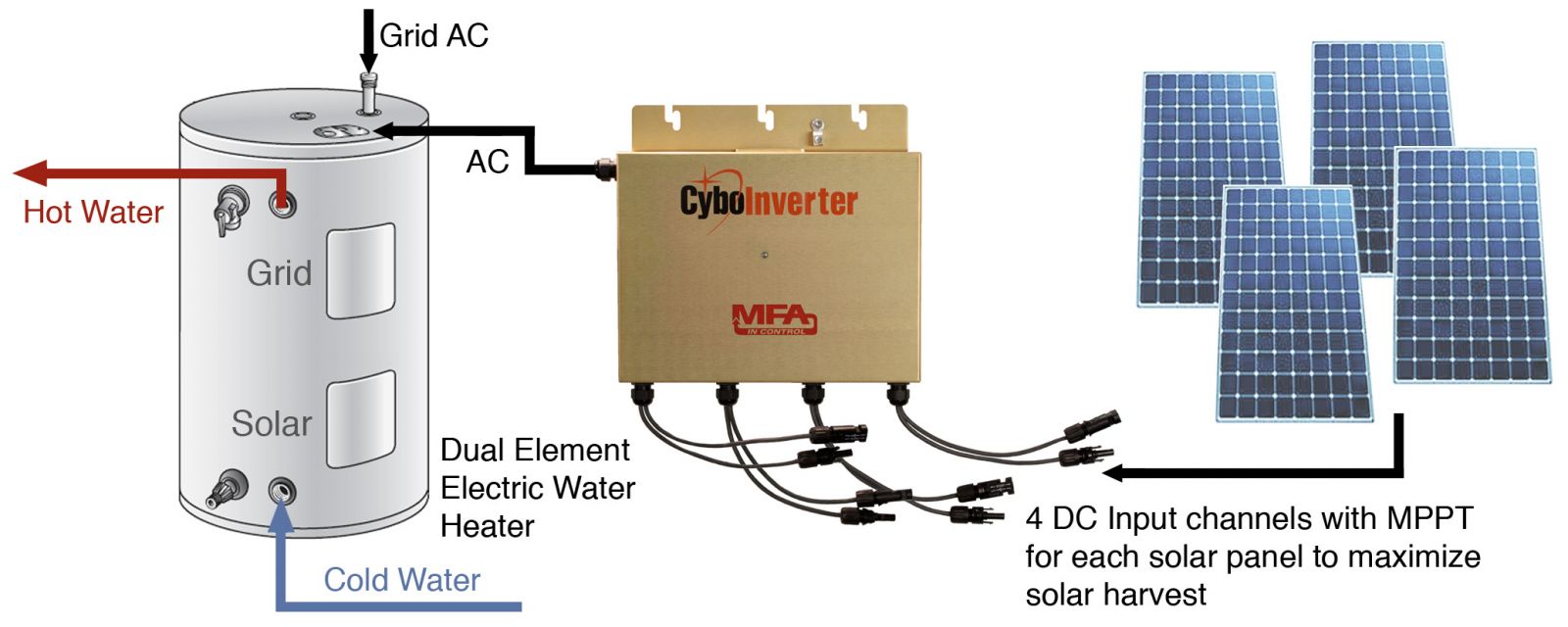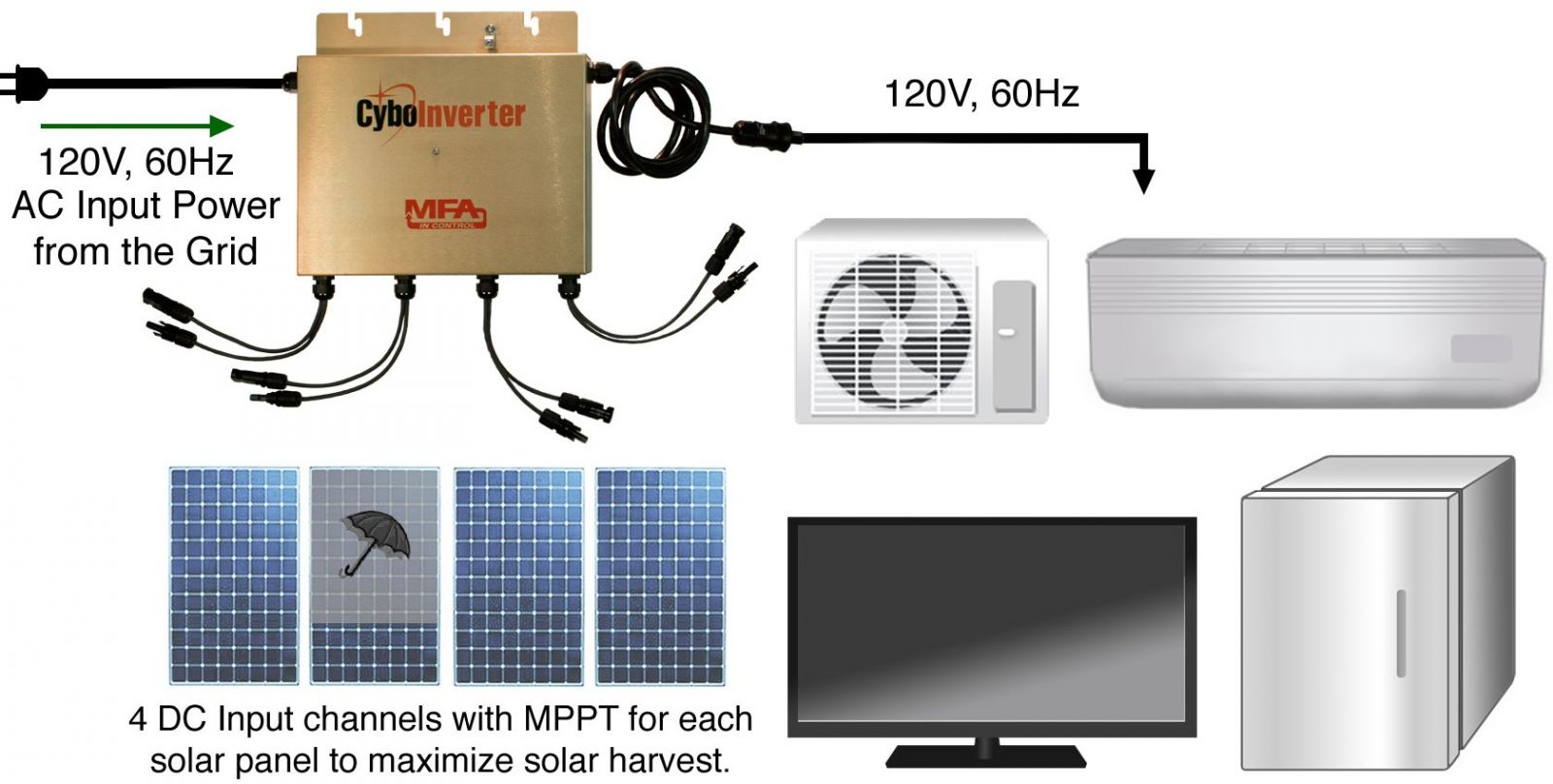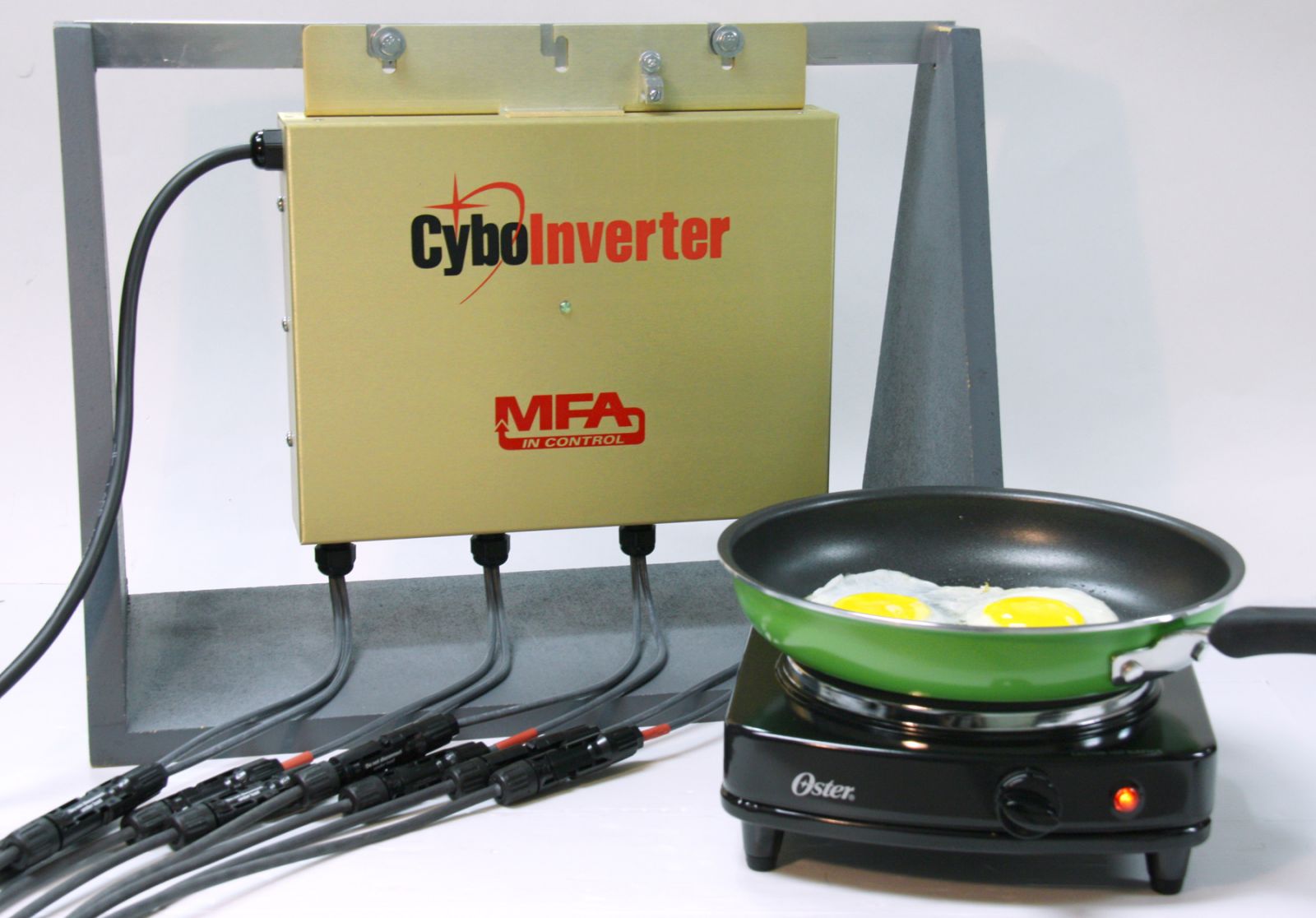How to Design Off-Grid Solar Systems to Deal with Extreme Weather Challenges
Most installed solar systems in the US are on-grid systems, which send power to the grid but must shutdown immediately when the grid goes down to keep the grid safe. It does not matter if the system has battery storage. In other words, if you have a regular on-grid solar system, when the grid goes down due to extreme weather, you still need to find ways to generate backup power to heat water and stay warm (by using a power generator or burning firewood).
Can solar be used to help deal with extreme weather conditions? The answer is yes. This article presents the design of off-grid solar systems that can continue to run regardless of the power grid condition.
Off-Grid Solar for Our Homes
When most people hear the term "off-grid solar", they may think of a remote cabin deep in the woods. While many off-grid solar systems are used in areas where there is no electric grid, an off-grid solar system simply means that the electricity generated by solar never flows back to the grid and, therefore, can stay on when the grid goes down. So, why not install off-grid solar in our homes to deal with extreme weather challenges?
Off-grid PV water heating
An electric water heater typically consumes a large portion of the electric bill. Thus, taking that load off the grid is a no brainer. As shown in Figure 1, an off-grid PV water heating system is quite simple, which includes multiple solar panels and an off-grid solar inverter designed for PV water heating. The inverter is connected to deliver solar energy to the lower heating element of the water heater. The temperature setpoint for the lower element can be purposely set much higher than the upper element; this way, the upper element that consumes grid power does not turn on unless a lot of hot water is used within a short period of time. Compared with thermal solar, PV water heating has many advantages: It is simple, clean, safe, cost-effective, and has no maintenance requirements. Packaged PV water heating systems are available on the market.

AC assisted off-grid solar systems
How do you operate an off-grid system with no batteries? Figure 2 shows an AC assisted off-grid solar system that can run 120V loads. With assisted AC input power, the system can run AC loads 24/7 with solar power, grid power, or combined power. It allows users to take major loads off the grid and avoid the cost and potential curtailment of an on-grid solar system.

Figure 2.
Off-grid solar systems for electrification
Assuming you lost power for a week and have no gas stove, how can you get warm food without burning firewood? Using an off-grid inverter with a few solar panels can run a hot plate to do cooking as shown in Figure 3. A small 48V lead-acid or Lithium type solar battery can be added in this system so that you can cook; you can also run the lights, fans, TV, and phone chargers after sunset. The battery can be charged by using solar or grid power when it comes back.

Figure 3.
Key design points of off-grid solar for homes
Compared with on-grid solar, an off-grid solar system does not require an on-grid solar permit or paying monthly fees. Most importantly, it can continue to operate when the grid goes down. Since most homes are wired with grid power, it is important to understand the "small tricks" for implementing off-grid solar for homes. The key design points are summarized in Table 1.
|
No |
Design Ideas |
Why and How |
|
1 |
Take major loads off the grid. |
Electric water heaters and air conditioners consume most of the power in a home. Running these loads with solar power can save most of the electricity bill. |
|
2 |
No need to do whole house backup. |
A whole house backup off-grid system can be costly. When the grid goes down, we would like to have hot water and run critical loads. Since LED lights, TV, computers, and phone chargers do not consume a lot of power, one or multiple small 1KW to 2.5KW off-grid solar system could be all you need when the grid goes down. |
|
3. |
Install a partial on-grid and partial off- grid solar system. |
Even if you want to have an on-grid system to meet the California new home mandate, you can still have off-grid solar for PV water heating and off-grid power backup. You can install the same types of solar panels on the roof, and use on-grid inverters to send power to the grid and off-grid inverters for hot water and have backup power. |
|
4 |
Either battery-less or battery enabled. |
For a PV water heating system or when using an AC assisted off-grid inverter, no battery is needed. A smaller battery may be useful to provide power at night when the grid is down. |
|
5 |
Install multiple off-grid circuits. |
Having multiple off-grid circuits to distribute the loads and have redundant capability. For instance, you may want to have a PV water heating system, and a 120V off-grid circuit in the kitchen to run lights, fans, a mini-split IAC, and small appliances. |
|
6 |
Install a larger AC assisted off-grid system for heavy loads. |
A 240V AC assisted off-grid solar system connecting to a 30A branch circuit can power a central air-conditioner, EV charger, swimming pool pumps, etc., during the day with a timer switch achieving significant power savings. |
Table 1.
It's not as complicated as it seems; most of these off-grid solar systems are simple and do not require batteries to operate. They are affordable and easy to install, allowing you to cut electricity bills and providing power and hot water regardless of the grid condition. Homeowners should consider off-grid solar as an important capability towards energy independence so that losing grid power will not cause major disruption and hardship in their lives.
Dr. George S. Cheng is the CTO of CyboEnergy, which focuses on the design, development, marketing, and servicing of the product lines in the clean energy field.
CyboEnergy | www.cyboenergy.com
Author: Dr. George S. Cheng
Volume: 2021 May/June











.png?r=7194)